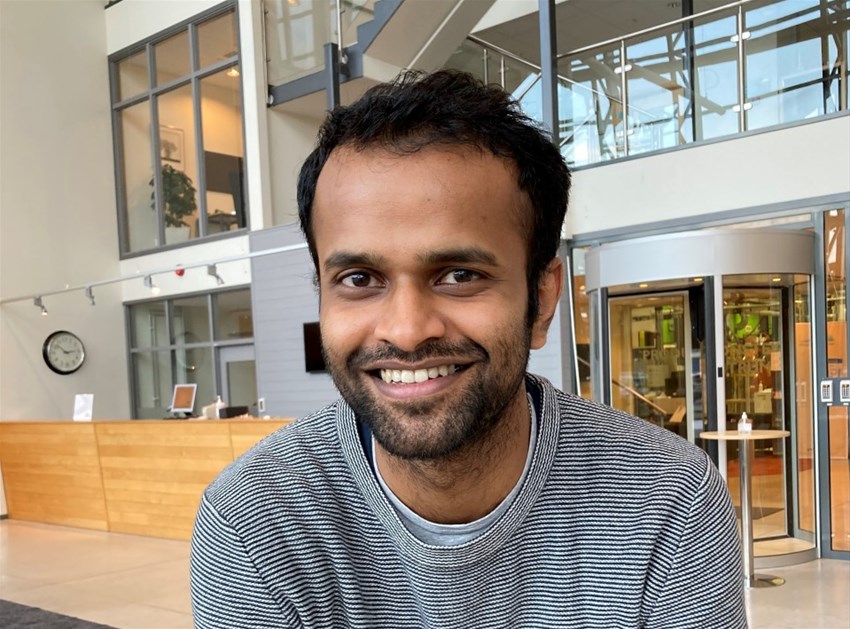Arun's research builds new knowledge about the alloy 718
22 Dec 2020
Additive manufacturing comes with many advantages over conventional methods. But how well does it perform in the production of high-performance components that are exposed to continuously changing loads, for example in aircraft engines? This is one of the questions that researcher Arun Ramanathan Balachandramurthi sought answers to in his research at University West.

It is logical that industries around the world are looking more towards additive manufacturing. This method comes with lots of potential in terms of, among other things; lower component weight, less material waste, shorter lead times, shorter set-up times and more flexible design. With powder-bed technology, where an energy beam melts metal powder layer-on-layer, it is possible to manufacture geometries that you simply cannot handle with conventional manufacturing.
In short: There is potential for the manufacturing industry to save a lot of time and money with the help of additive manufacturing.
Focus on reliability and performance
So far, however, an obstacle stands in the way: the ability of the additive manufacturing process, to reliably produce high-performance components. Therefore, the process must be examined in detail before it can replace conventional solutions with the same performance.
“When we can establish that the mechanical performance, such as strength, fatigue life etc. in additive manufacturing, reaches at least the same level as in castings or forgings, extremely much is gained”, Arun claims.
“Should we find that performance exceeds conventional methods, the success will be even greater.
Therefore, research in this area is important. And that is why representatives of the industry, from materials developers to end users, are part of University West's project ‘Sustainable manufacturing through next generation additive processes’ (Suman-Next).”
“In order to manufacture high-performance components with this technology, it is important to understand the entire additive manufacturing process chain. What is it in the process that changes the microstructure and properties of the material and why does it happen?”
“My research is limited to examining and understanding the relationship between fatigue properties and microstructure of the alloy 718.”
Tests correspond to real stresses during flight
“We have done a number of tests that show how test rods are affected when they are exposed to different loads. The tests can be compared to what a component in an aircraft engine is exposed to during take-off, high-altitude flight and landing.”
“Knowledge such as this will be absolutely decisive for whether additive manufacturing can be used for the production of high-performance components in, among other things, gas turbines and jet engines.”
In his studies Arun has come to some important conclusions:
- After the powder-bed process, there may be inclusions and defects in the material that dramatically impair fatigue life.
- By hot isostatic pressing (HIP) it is possible to close the defects together, which gives the material an improved ability to withstand fatigue.
- After the powder-bed process, the material gets a rough surface with notch-like crack initiation sites.
- When the rough surface is removed, cracking decreases and the fatigue life increases.
- Texture, grain size and sub-grain structure affect the fatigue behaviour.
“The results of my research have now become part of the even larger research project ‘Powder bed fusion additive manufacturing of metals for gas turbine applications’, PODFAM. It is run by University West together with Sandvik Additive Manufacturing, Arcam, Quintus Technologies, GKN Aerospace Sweden and Siemens Energy.”
Chose Sweden for the different culture
Arun's research and doctoral dissertation are linked to his bachelor's degree in India many years ago. It was about how two materials can interact and form composites.
“My doctoral dissertation is also about interaction, but this time between how process, material and mechanical construction together affect the Alloy 718.”
Arun ending up in Sweden and at University West was no coincidence. Instead of following the "mainstream" paths for his further education (USA, Australia or the UK), he wanted to experience a different culture and develop himself through it. That is why he landed on Swedish soil in 2012.
“In addition to a new culture, I chose Sweden because it is a country with a recognized good reputation in materials know-how.”
After graduating with a master's degree at Chalmers in Gothenburg, he became employed at GKN Aerospace in Trollhättan. He still has that job while he is doing research.
Contact information: Arun-ramanathan.balachandramurthi@hv.se, phone: 0520-22 33 27.


